Idea by
Fabio Gigone, Angela Gigliotti
U67
Call for ideas 2018
The anamorphic architectural labour
The anamorphic architectural labour
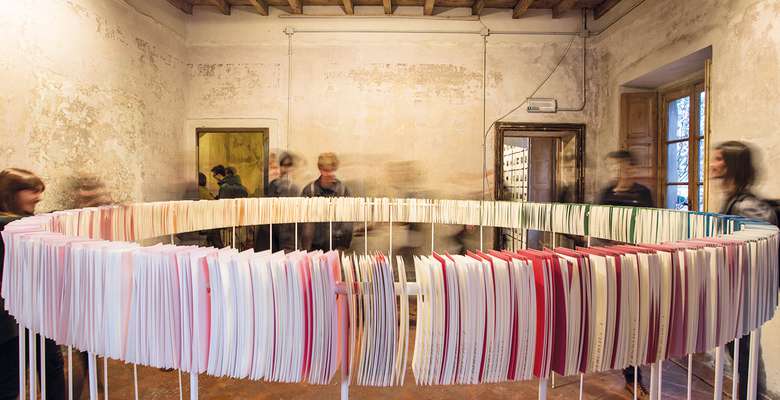
The relationship between architecture and the dominant economic system are crucial when addressing asymmetrical labour conditions within our profession. A precarious status affects the entire organigram of labour within the practices. Today to be competitive architects as employers need to negotiate downward wages and so do architects as employees with salaries. How to solve what looks as a chicken-and-egg dilemma? Our idea refers to the use of the anamorphosis as metaphor. This latter, as a representation technique, is a distorted projection that requires to the viewer to occupy odd conditions to reconstitute a correct image. We are deploying an anamorphic mode of production, in which we, as architectural labourers, are pursuing specific vantage points and apparata from which reconstitute worthy labor architectural conditions.
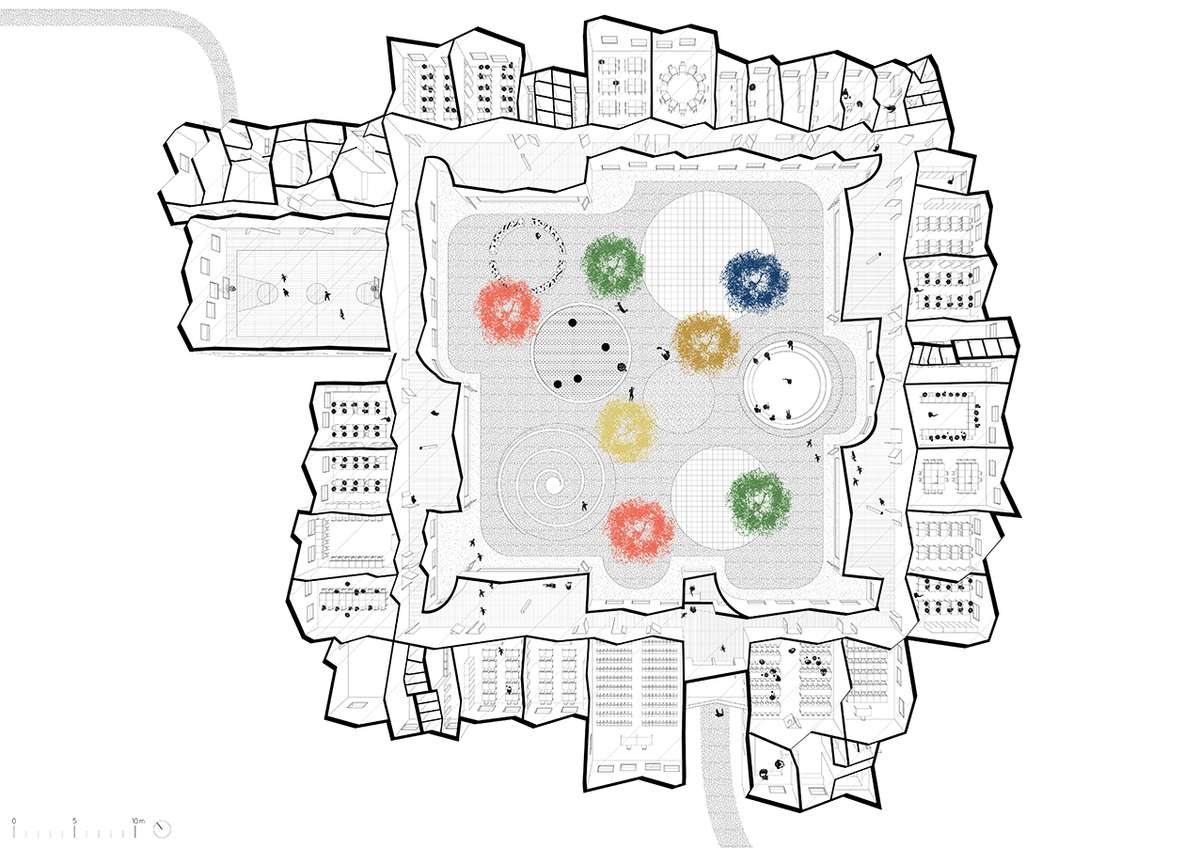
New primary school in Aviano, Italy. A close relationship between the rooms and a private garden is prioritized, arranging the spaces in an encircling necklace where the clockwork progression is perceived as a growth path by the children. In this way, the circulation system functions as an orientation tool, as well as a direct extension’s space for the classrooms, enhancing a long-lasting relational system and varied experimental didactic approach.
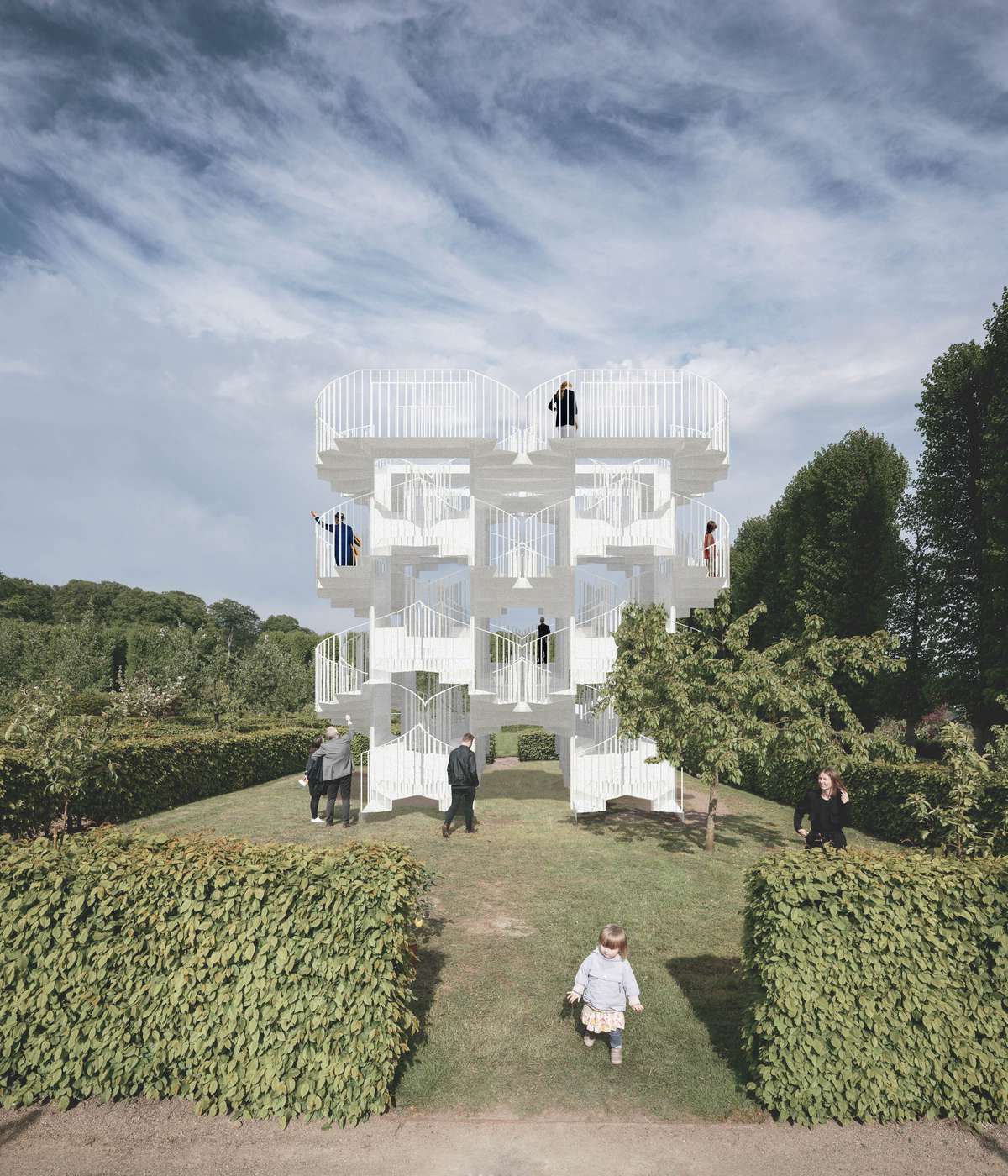
Temporary Pavillion in Holtegaard, Denmark. Sceneri refers to the ossessive geometry and symmetry; to the design of the labyrinth; to the theatrical illusory use of perspective through the multiple backdrops; to the duality of the scene and audience and to the machinery of the backstage. It builds a repetition of 16 winding staircases organized in a grid of 4 by 4 that touching and connecting build an uncountable number of paths and ways of experiencing the space.
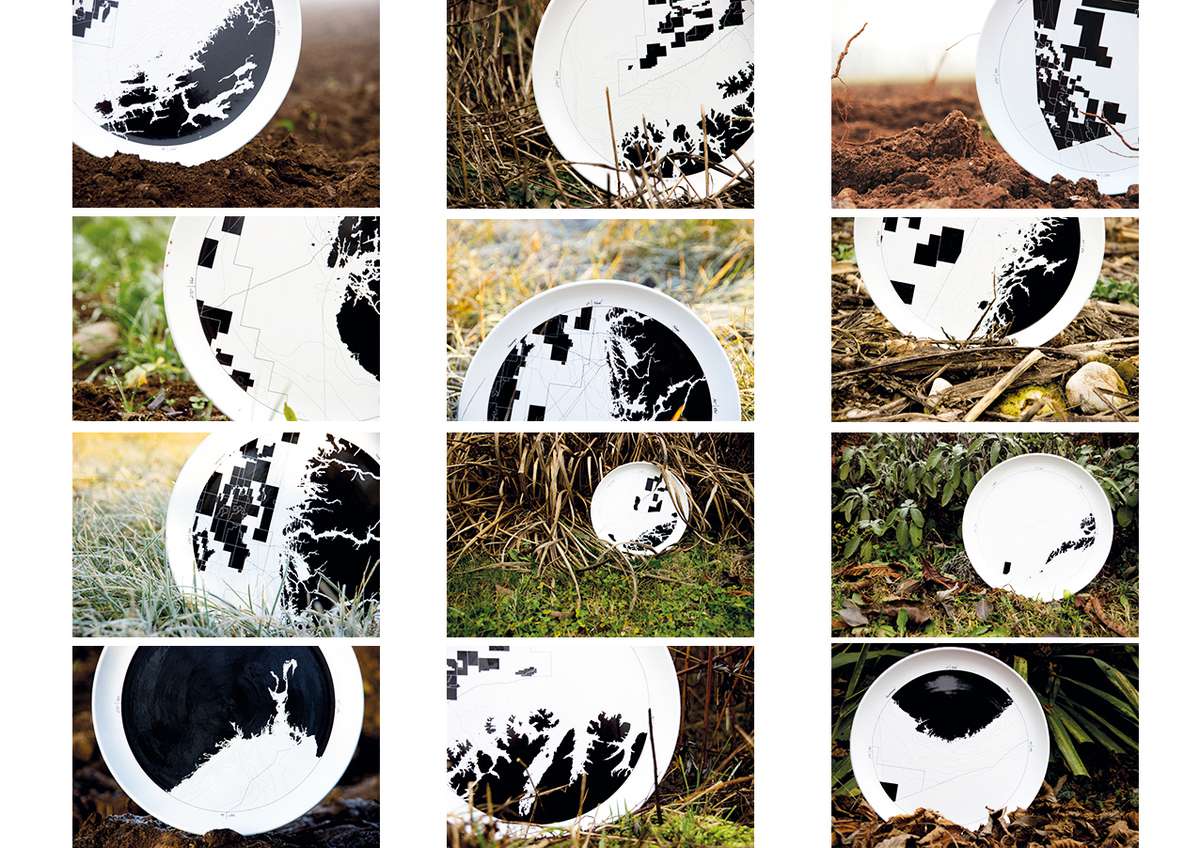
Set of ceramics, Norway. 12 maps that consider the real borders of the nation, highlighting its value in terms of economic and cultural production. A silk-screen printing that takes into account both of the inshore and the offshore oil landscape and physically provides a visual framework to discuss the contemporary meaning of territory and introduce Norway as a unitary context made of two extreme but symbiotic faces, necessary to understand the past and the aspirations of the nation.

House 100, Italy. This is a project that starts from a reflection on the living: a delicate process of definition of the space of relations. The essential acts of living of the single person, the other inhabitants under the same roof and the neighborhood on the other side of the fence. It gives the same quantity of indoor and outdoor space: it has 100 square meters of indoor rooms and 100 of outdoor. The total surface of the house is developed using a non-hierarchical grid of 24 rooms.
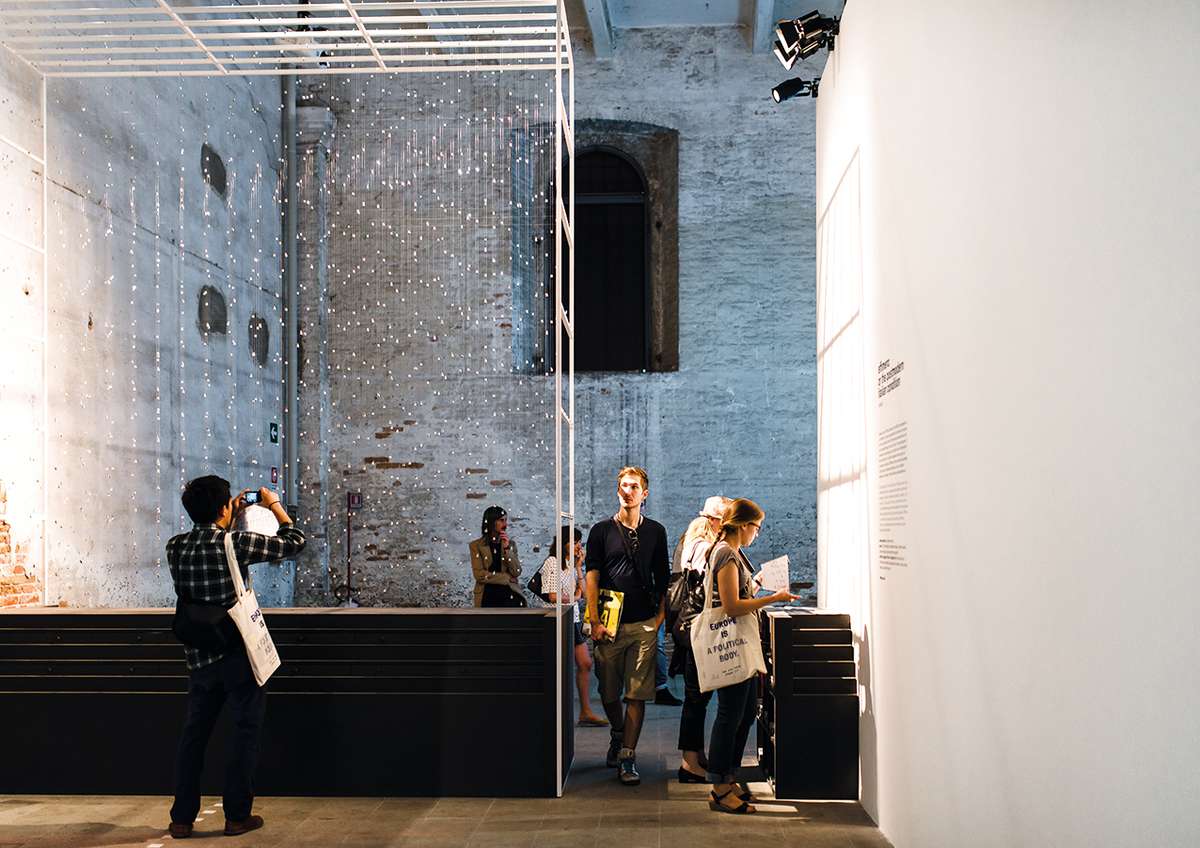
Effimero, 14th La Biennale Venezia, Italy. Exhibition design and art direction of the installation for the Szacka’s research. A physical archive, which volume has a section made of 5 stairs with drawers opening in both directions. On top of it 1,3 km of nylon thread hung on a white steel structure. This elaborated temporary structure, creates a network of 1850 nodes, each marked by a steel cylinder bolt, and a multitude of 1000 seated man in scale 1:87 that inhabit the structure. (Ph. Paquette)
The anamorphic architectural labour
The anamorphic architectural labour

The relationship between architecture and the dominant economic system are crucial when addressing asymmetrical labour conditions within our profession. A precarious status affects the entire organigram of labour within the practices. Today to be competitive architects as employers need to negotiate downward wages and so do architects as employees with salaries. How to solve what looks as a chicken-and-egg dilemma? Our idea refers to the use of the anamorphosis as metaphor. This latter, as a representation technique, is a distorted projection that requires to the viewer to occupy odd conditions to reconstitute a correct image. We are deploying an anamorphic mode of production, in which we, as architectural labourers, are pursuing specific vantage points and apparata from which reconstitute worthy labor architectural conditions.
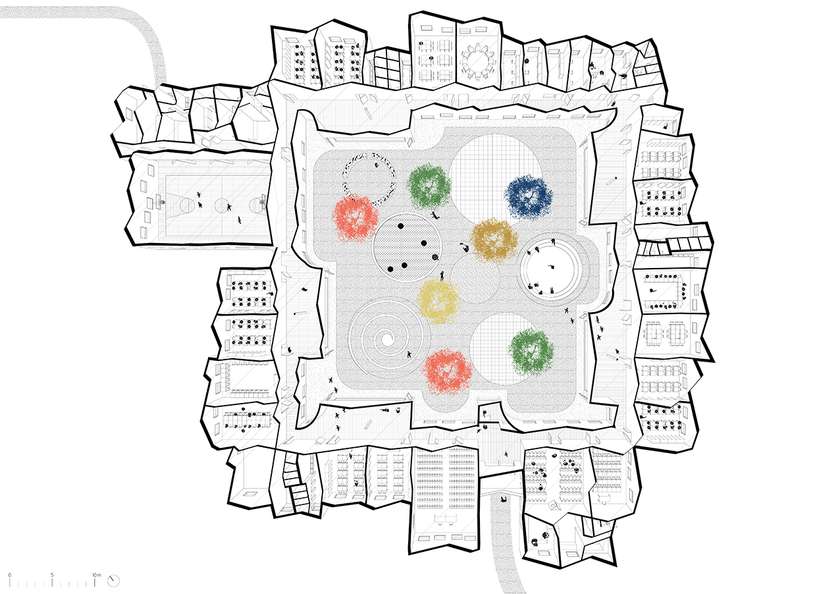
New primary school in Aviano, Italy. A close relationship between the rooms and a private garden is prioritized, arranging the spaces in an encircling necklace where the clockwork progression is perceived as a growth path by the children. In this way, the circulation system functions as an orientation tool, as well as a direct extension’s space for the classrooms, enhancing a long-lasting relational system and varied experimental didactic approach.
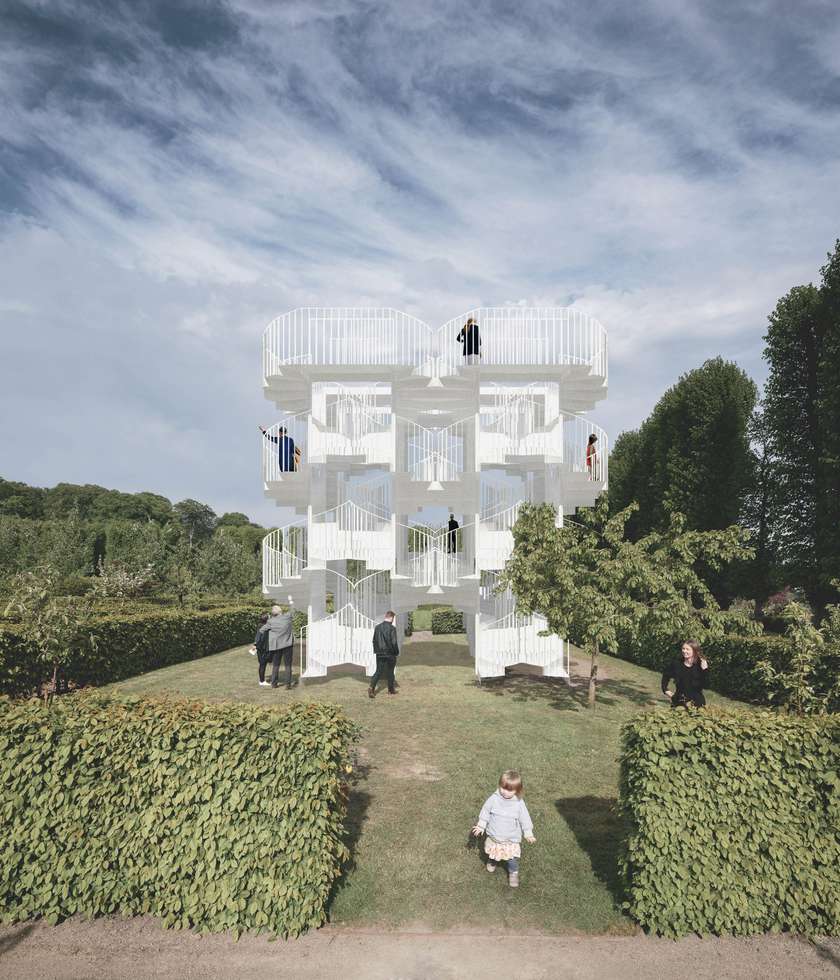
Temporary Pavillion in Holtegaard, Denmark. Sceneri refers to the ossessive geometry and symmetry; to the design of the labyrinth; to the theatrical illusory use of perspective through the multiple backdrops; to the duality of the scene and audience and to the machinery of the backstage. It builds a repetition of 16 winding staircases organized in a grid of 4 by 4 that touching and connecting build an uncountable number of paths and ways of experiencing the space.
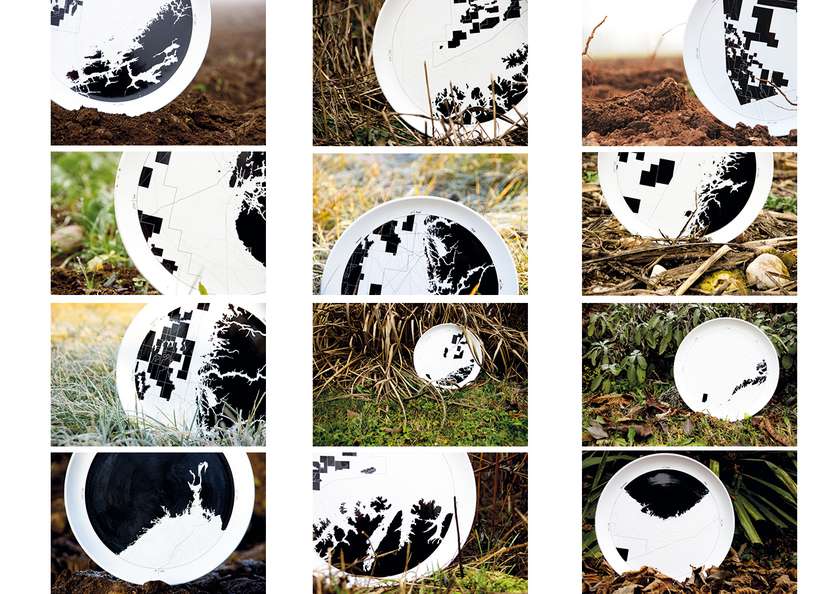
Set of ceramics, Norway. 12 maps that consider the real borders of the nation, highlighting its value in terms of economic and cultural production. A silk-screen printing that takes into account both of the inshore and the offshore oil landscape and physically provides a visual framework to discuss the contemporary meaning of territory and introduce Norway as a unitary context made of two extreme but symbiotic faces, necessary to understand the past and the aspirations of the nation.
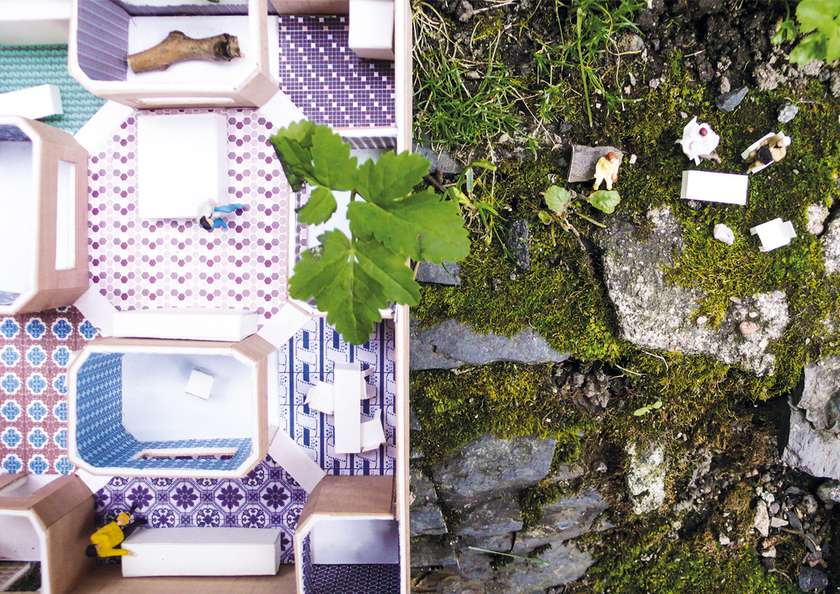
House 100, Italy. This is a project that starts from a reflection on the living: a delicate process of definition of the space of relations. The essential acts of living of the single person, the other inhabitants under the same roof and the neighborhood on the other side of the fence. It gives the same quantity of indoor and outdoor space: it has 100 square meters of indoor rooms and 100 of outdoor. The total surface of the house is developed using a non-hierarchical grid of 24 rooms.
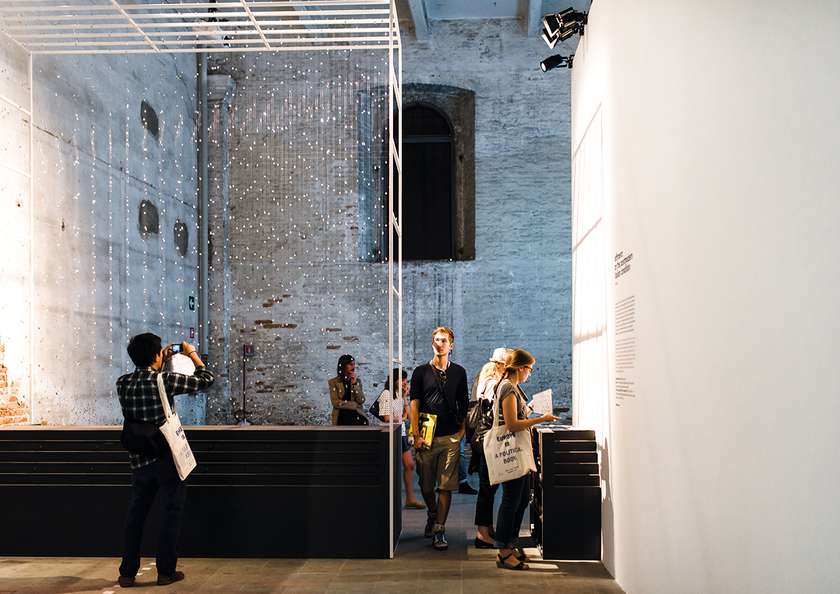
Effimero, 14th La Biennale Venezia, Italy. Exhibition design and art direction of the installation for the Szacka’s research. A physical archive, which volume has a section made of 5 stairs with drawers opening in both directions. On top of it 1,3 km of nylon thread hung on a white steel structure. This elaborated temporary structure, creates a network of 1850 nodes, each marked by a steel cylinder bolt, and a multitude of 1000 seated man in scale 1:87 that inhabit the structure. (Ph. Paquette)